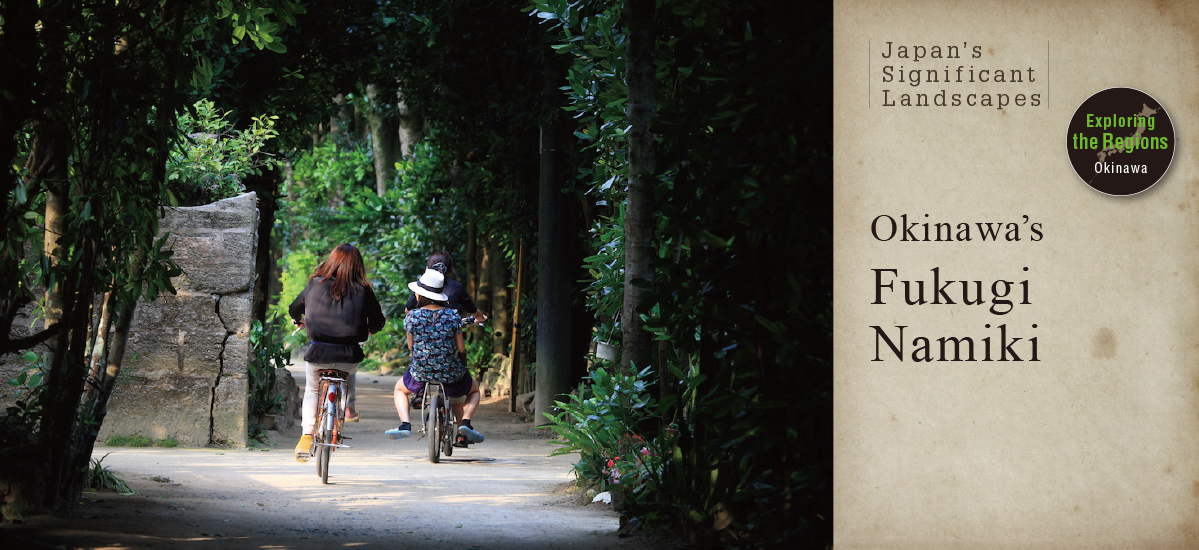
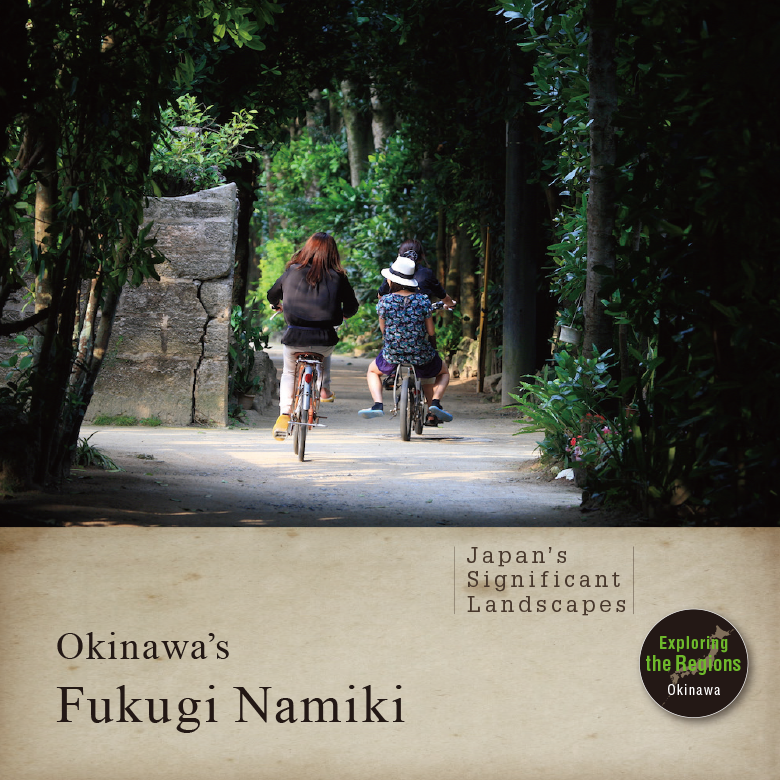
Japan’s unique landscape is filled with breath-taking beauty and vistas that inspire and delight. In this series, photographer Kenji Aoyagi brings us significant landscapes, rich with history and worthy of preservation. The time we explore the shady tree-lined lanes of Bise, a seaside hamlet on the island of Okinawa.
Photos and Text : 青柳健二 Kenji Aoyagi / English Version : Judy Evans
Keyword : Japan's Significant Landscapes Series / Okinawa / Fukugi Namiki / Motobu Peninsula
Bise – A Tiny Seaside Settlement with Thousands of Fukugi Trees
The Motobu Peninsula in the north of Okinawa Island has a moderate climate all year round and very high rainfall. The average temperature is 23.4 degrees Celsius and the area receives around 2,000 millilitres of rain every year. Situated at the end of the peninsula and a ten-minute walk from the renowned Okinawa Chūraumi Aquarium, the village of Bise is a popular scenic spot. The sea here is shallow and is surrounded by coral reefs. The iconic feature of the village is the rows of fukugi (Garcinia subelliptica) trees that delineate the perimeter of each homestead, joining up to create a criss-cross pattern of row upon row of trees known as “fukugi namiki”.

Fukugi, which when written in kanji means “happiness tree”, is an evergreen tropical tree first identified in the Philippines. The trees have straight trunks and dense clusters of elliptical thick leathery leaves that, when planted in rows, form a protective barrier against sea spray, the wind, airborne sand and even fire. These fukugi windbreaks are characteristic of Okinawan coastal villages where typhoons are a constant threat.
As well as the protection these trees offer, they also provide the yellow dye essential to Okinawa’s traditional Ryūkyū bingata stencilled textiles and tsumugi silk. The dye is extracted from the heartwood and bark of these trees.
Once planted as windbreaks all over the island of Okinawa, the fukugi tree is believed to have been introduced to Okinawa from South-East Asia around five hundred years ago. The fukugi namiki windbreaks now only remain in pockets of Okinawa Island as well as on some of the outlying islands, and are no longer seen in the larger towns and cities such as Naha.

This makes Bise quite unique. The hamlet, with its beautiful white sandy beach, boasts the largest remnant of fukugi namiki homestead windbreaks in Okinawa. There are around 230 houses in Bise, and around 20,000 fukugi trees. That’s a lot of trees per house if you do the arithmetic, but not all houses have these windbreaks. Twenty percent of the houses have concrete-block walls around them while seventy percent are protected by fukugi trees – more by far than in any other village in Okinawa. By comparison, the nearby hamlet of Imadomari, which forms part of the Nakijin Castle ruins World Heritage site, has fukugi homestead windbreaks around only forty percent of the homes.
Planted in Accordance with the Feng Shui Principles of the Ryūkyū Kingdom
Bise is believed to have been laid out according to the principles of feng shui, which was introduced to the Ryūkyū Kingdom during the seventeenth century. Feng Shui is a form of divination that determines the auspiciousness of a site based on its environmental features. In Feng Shui, the Earth is considered to be a single life-form with life force energy (or “chi”) flowing through it. Feng shui is based on reading the positive and negative aspects of the terrain through which this life force flows.
The hamlet of Bise dates back to 1609 and the fukugi windbreaks are thought to have been planted in the latter half of that century, during the time of the Ryūkyū Kingdom. The oldest of the trees are estimated to be between 250 and 300 years old.
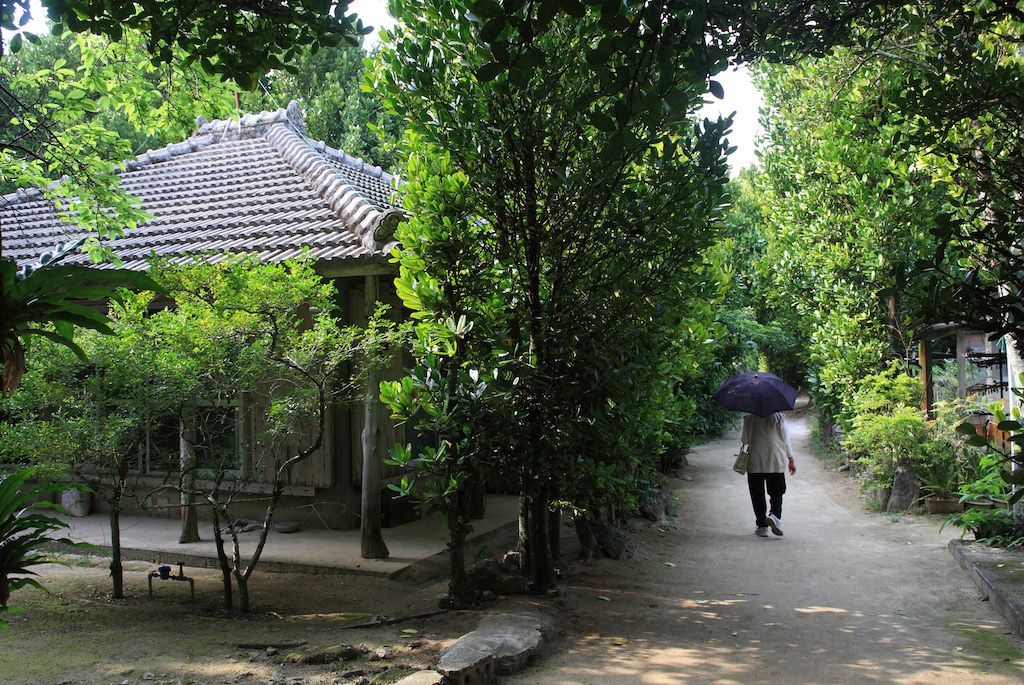
The thinking behind feng shui was adopted as a state policy of the Kingdom of the Ryukyus between the 17th and 18th centuries in a broad range of practical applications that ranged from the construction of houses, villages, mausoleums, and the capital, to its use in forest administration. One of the most famous figures in Okinawan history, a government official from the time of the Ryūkyū Kingdom known as Sai On, was a gifted feng shui practitioner who directed that fukugi trees be planted around the homesteads. In the hamlet of Bise, fukugi trees surround each of the residences and form a larger enclosure around the entire village. In this way, an auspicious feng shui protective enclosure could be created where the natural landscape offered none.
The grid-like pattern that results from the planting of fukugi namiki in Bise is due to the evenly sized sections of land that the houses are built on. This systematic layout and allocation of land is thought to be the result of the land reforms carried out in 1737.
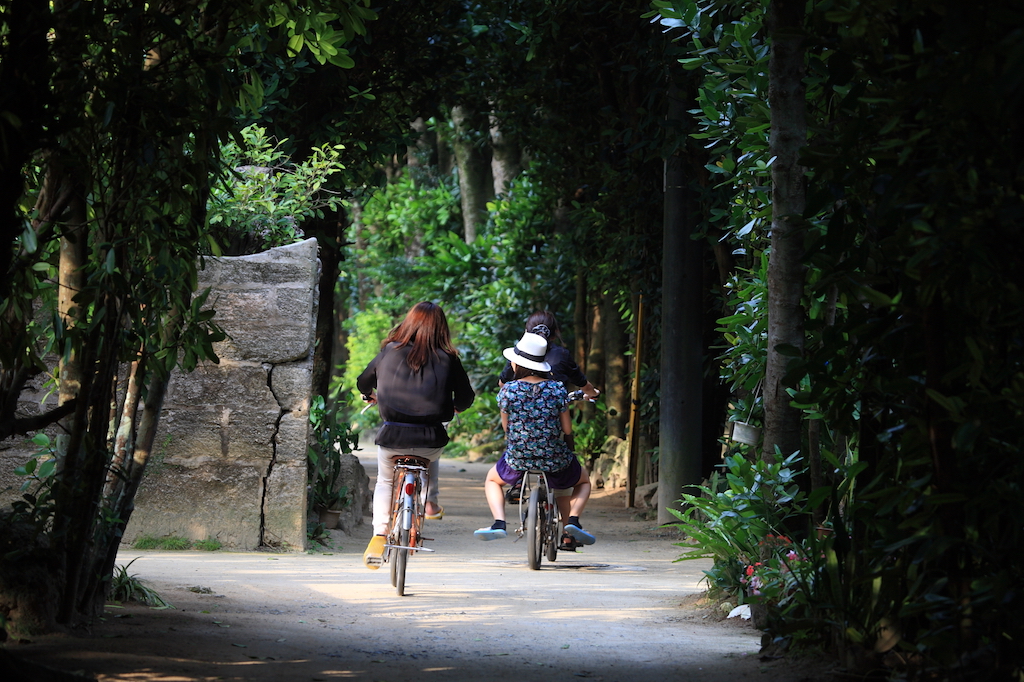
Selected in 1983 as One of Okinawa’s Top 100 Scenic Spots
Two centuries later, the main island of Okinawa suffered catastrophic damage in the Second World War. Even sections of the fukugi windbreaks in Bise were destroyed by aerial bombing and fukugi trees were felled all over the island to provide timber for the rebuilding effort after the war. There must have been some recovery in the post war years though; by the time of the 1975 World Fair (Expo ‘75), held in Okinawa and conceived in part to commemorate the American handover of Okinawa to Japan in 1972, Bise had garnered attention as a sightseeing spot, and in 1983, the hamlet was selected as one of Okinawa’s top one hundred scenic spots.
Growing to heights of between ten and twenty metres, the rows of fukugi trees offer a cooling respite from the hot tropical sun. The tall trees meet overhead to turn these tree-lined lanes into green tunnels, while the dappled sunlight filtering through the trees forms mottled patterns that dance gently on the white sandy soil of the lanes.
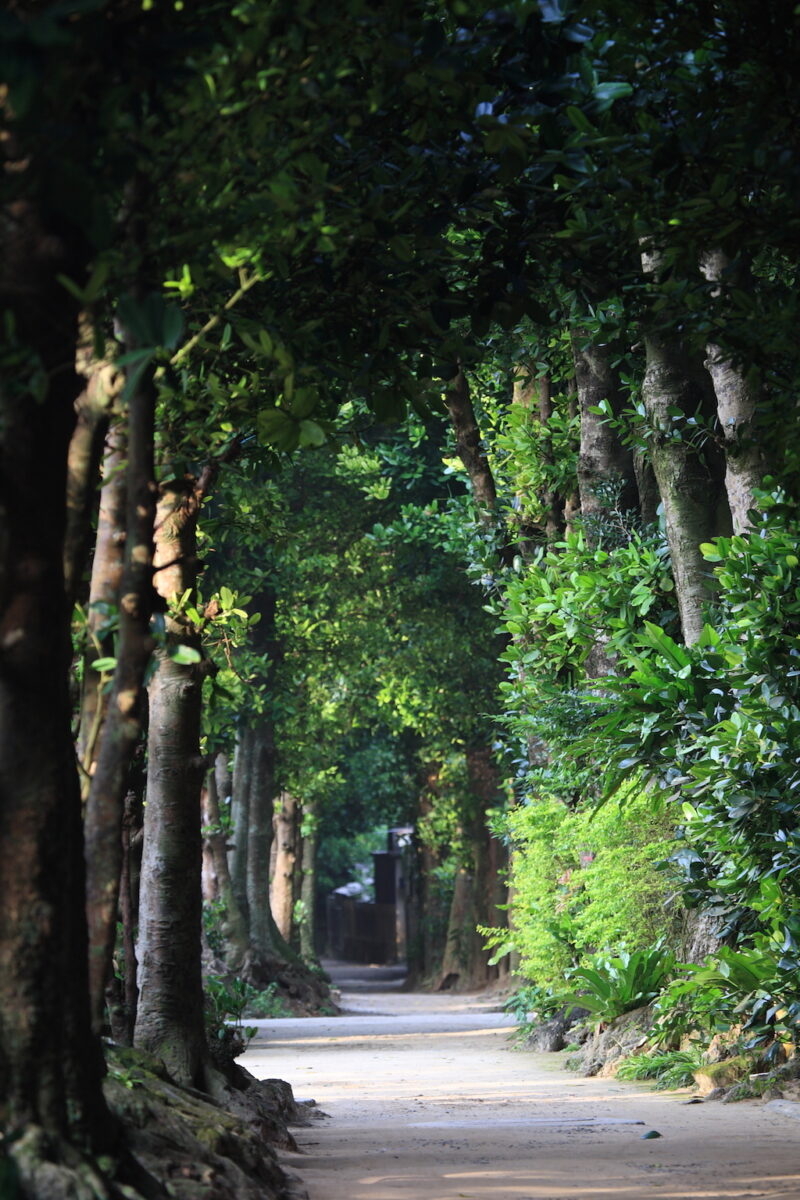
Wandering alone down one of these lanes, I’m struck by the timelessness of this landscape. The old homesteads sit solidly, shaded by their protective walls of green, while locals quietly go about their business along the lanes. For a moment I think I see a dog investigating something in the dappled shade but when I blink, it has disappeared. Time seems to stand still here in this cultural landscape and for a moment I wonder if perhaps I’ve seen an apparition from the past!
The fukugi namiki provide a pleasant place for tourists to stroll but for locals, the trees engender mixed feelings. While residents are proud of the cultural landscape that protects their properties from the elements, they mourn the loss of privacy brought about by the increase in tourism. And then there’s the nuisance factor – the trees give off an unpleasant odour and are a breeding ground for mosquitoes. I guess you can’t win them all!
The emerald green ocean sparkles at the end of the shady green tunnel. As I emerge into the sunlight and onto the white sandy beach, I see Iejima Island in the distance, with its iconic pointy mountain, while in the foreground a woman works amongst rows of stakes sticking up out of the shallow water. She’s harvesting “aosa”, or sea lettuce, an important sea vegetable cultivated here. Meanwhile, a small boat bobbing about on the water is setting out lines of mozuku seedlings, a brown type of seaweed that occurs naturally in Okinawa and is considered a superfood of the sea.
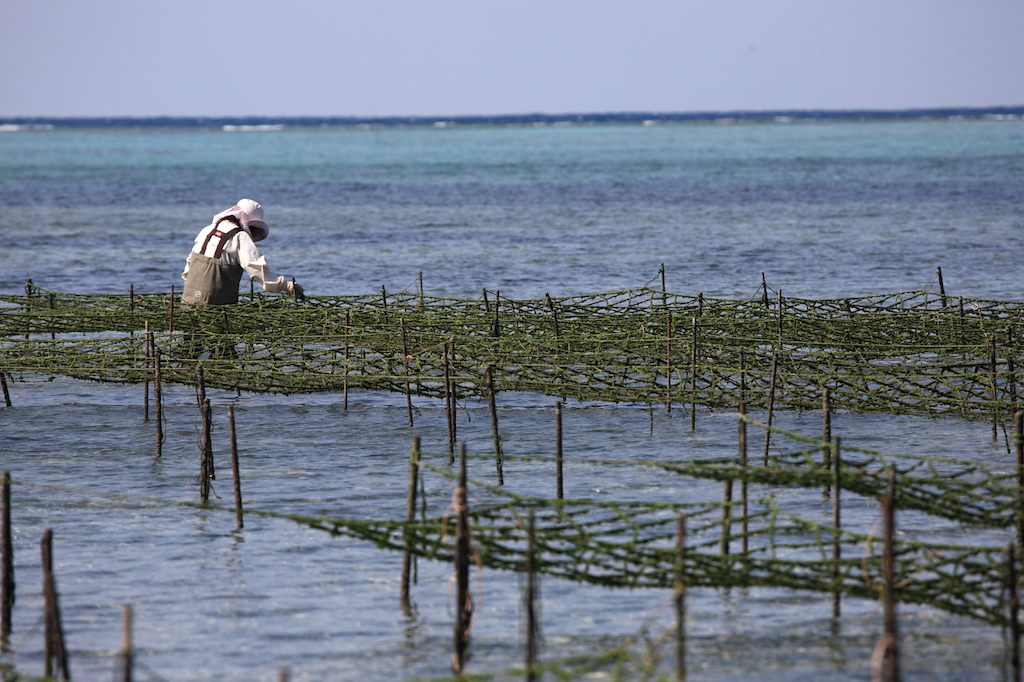
References
東京大学大学院 農学生命科学研究科「地域森林景観」
The University of Tokyo Faculty of Agriculture Graduate School of Agricultural and Life Sciences Report “Chiiki Shinrin Keikan” (Regional Forest Scenery)
http://www.fuuchi.fr.a.u-tokyo.ac.jp/lfl/report/2007bise/report.html
琉球大学農学部 仲間勇栄「村落環境の管理システムとしての山林風水の意義一近世琉球の村落・林野景観を事例にして一」
Ryukyu University Faculty of Agriculture, Yuei Nakama, “TheSignificance of Fung-Shui as a System of Administration for Village Environments. The Case of a Modern Ryukyuan Village and Forest Landscape.
http://www.jsppr.jp/academic_journal/pdf/Vol.2_No.1_P39-46.pdf








